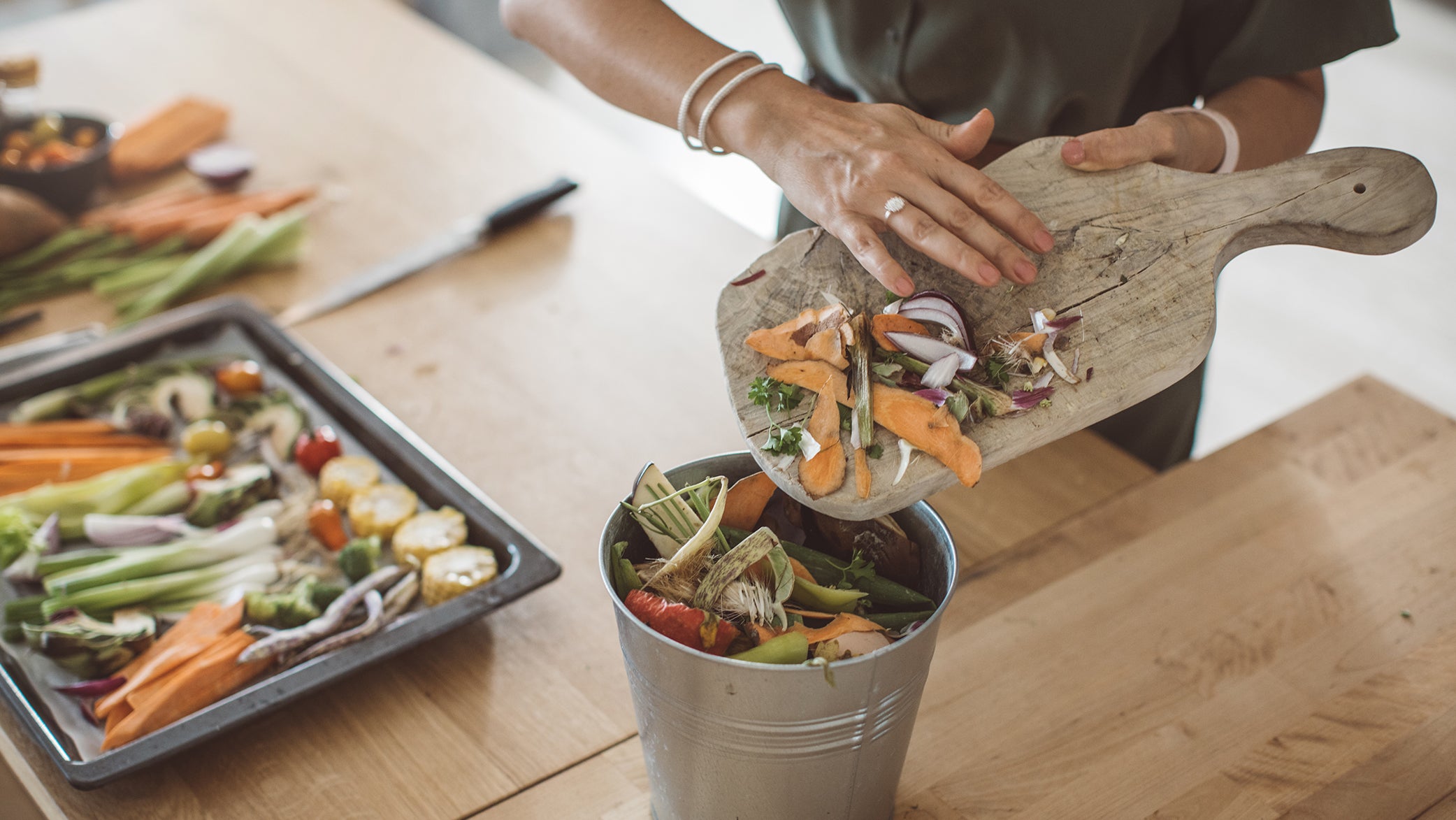From excessive packaging to tossed leftovers, cooking (and eating out) may sometimes feel like you’re adding more to your garbage can than your fridge. Perhaps you’re already using a reusable shopping bag, and buying food with little or no packaging. Take it to the next level by using more of the food you buy. Zero waste cooking is a plant-based way of using the entire vegetable. Not only can it save you money and reduce your environmental footprint, but it can also increase the flavor of your dishes. Here are my favorite ways to use the whole vegetable (and fruit!).
1. Vegetable Stock from Scraps
When prepping meals, save vegetable scraps to make broths out of. Have a bag or container in the freezer to save the scraps. Toss in herb stems, onion ends, carrot ends, vegetable peels, and any other vegetable that you would put into a soup (broccoli and cauliflower tend to make a funkier broth). When you’ve gathered a full large resealable bag, add scraps with cold water into a pot, let veggies simmer for 1 ½ hours and voila! You’ve made homemade broth!
2. homemade vinegar
Fruit peels and scraps can be used to flavor the liquid used to cook oatmeal or used in flavored syrups or vinegars. Have a bag or container in the freezer to save them until you’re ready to use.
3. citrus zest
Before juicing citrus (hello grapefruit and oranges), first zest the peels to keep in the freezer. Add this zest to recipes for extra bright flavor.
4. vegetable stems
Root vegetable stems are usually thrown out but they are quite delicious (and often nutrient dense)! Beet greens are my favorite to sauté with garlic but they are also good tossed in any recipe as a substitute for kale or spinach. You can even add them to an afternoon snack like in this Beet Smoothie.
Carrot tops are also great sautéed and you can use them in pesto instead of basil for a refreshing take on the classic sauce. Turnip and radish greens are also edible (and delicious).
5. Herb Stems
Herbs leaves are often picked off of the flavorful stems and then the stems are tossed out. The stems are actually full of the same flavor as the leaves. Add the chopped tender stems (like cilantro) into recipes calling for the herbs, and save harder stems (like thyme) for broth or soups to add extra flavor naturally.
How do you use whole fruits and vegetables in your cooking?


